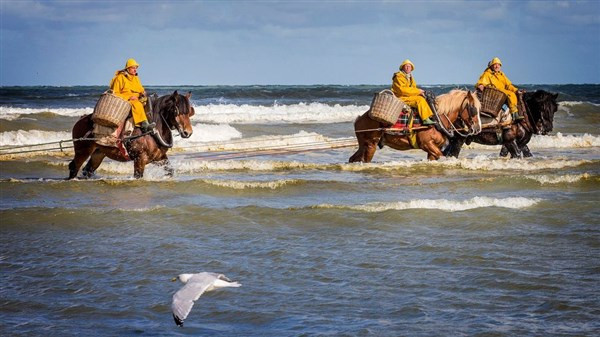🐎🌊 The Last Riders of the Tide

🌊 On the misty shores of Oostduinkerke, Belgium, an ancient ritual still greets the dawn. Towering Brabant draft horses, weighing nearly a ton, wade chest-deep into the freezing North Sea. Their riders—wrapped in yellow oilskins, heavy boots, and wide baskets slung at their sides—guide them with calm precision, honoring a rhythm passed down through bloodlines and generations.

🐚 For more than 700 years, these fishermen have harvested tiny grey shrimp this way, the horses’ immense strength steadying them against crashing waves while dragging weighted nets across the ocean floor. Once, villages bustled with horse-shrimpers. Today, only 19 men remain—the last guardians of a craft that balances raw force with delicate hands, as they sift the shimmering catch from sand and shells.

🐎 Each ride into the sea is more than work—it is a living link to ancestors who taught their sons and grandsons to trust in the tide, the horse, and the bond between them. The animals, gentle giants of unmatched endurance, are cared for as family, their power softened by loyalty and patience.

✨ Now recognized by UNESCO as intangible cultural heritage, the practice has transformed into a symbol of endurance. It is less about the shrimp on the plate and more about resilience, belonging, and pride. To watch a fisherman and horse vanish into the surf, then return—nets heavy, hearts steady—is to witness a story carved by sea and time, a tradition too stubborn and beautiful to fade.








